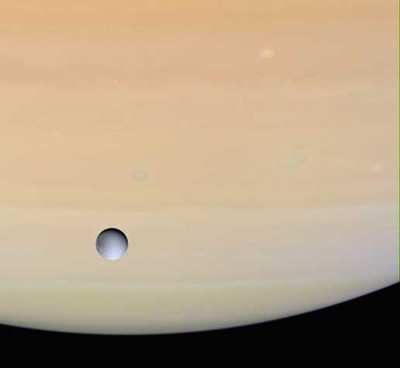State Of Health: Excellent
The most recent spacecraft telemetry was acquired today from the
Goldstone tracking station. The Cassini spacecraft is in an
excellent state of health and is operating normally.
Let's take a look at what Cassini will be doing for science this
week. Looks like the Magnetospheric and Plasma Science (MAPS)
instruments -- Cassini Plasma Spectrometer (CAPS), Ion and Neutral
Mass Spectrometer (INMS), Magnetometer Subsystem (MAG),
Magnetospheric Imaging Instrument (MIMI) and Radio and Plasma Wave
Science (RPWS) instrument -- will be continuing the magnetospheric
boundary campaign. They will be looking at boundaries on the dawn
flank of the magnetosphere, including the bowshock, magnetopause
and associated boundary layers. These instruments will also be
monitoring the solar wind when outside the magnetosphere.

The Ultraviolet Imaging Spectrograph (UVIS) will conduct a
survey of hydrogen in the interplanetary medium and the Cosmic Dust
Analyzer (CDA) will monitor dust streams in or coming from Saturn's
magnetosphere.
The sequence team leads finished uplinking the S08 background
sequence today.
The Visual and Infrared Mapping Spectrometer (VIMS) team at JPL
began reconstructing meta-data for the earliest Cruise data to
support reprocessing to make a better set of cubes for final
archiving. A design is now in place for capturing this meta-data
and migrating it into the cube labels.
Analysis of the Huygens science data continues. Spectacular images
captured by the Descent Imager and Spectral Radiometer (DISR)
reveal that Titan has extraordinarily Earth-like meteorology and
geology. DISR has revealed geological evidence for precipitation,
erosion, mechanical abrasion and other fluvial activity that says
that the physical processes shaping Titan are much the same as
those shaping Earth.
Heat generated by Huygens at the landing site warmed the soil
beneath the probe and both the Gas Chromatograph Mass Spectrometer
(GCMS) and the Surface Science Package (SSP) detected bursts of
methane gas boiled out of surface material, reinforcing methane's
principal role in Titan's geology and atmospheric meteorology --
forming clouds and precipitation that erodes and abrades the
surface.

The program is bearing down on the end of Science Operations Plan
(SOP) Implementation for the tour sequences. There are only 41
sequences in the prime mission. Today the second and final official
port was met for S39 and S40. The wrap up meeting for this process
will be held on February 9. By that time, the process for S41 will
be nearing its end as well.
Now that the world has seen the first images of Saturn's moon
Titan, here is a chance for young people to imagine voyages to
other planets. EURISY, in cooperation with UNESCO and the Norwegian
Center for Space-related Education, is holding a competition for
young sci-fi writers. The author of the best story in each age
group will win a digital camera and there will also be prizes for
whoever comes 2nd and 3rd. From Earth to Planet X is the theme.
Using this as their base, budding authors are asked to imagine and
write a story describing progress, developments and discoveries
related to science and life in outer space.
 ANN's Daily Aero-Term (05.29.25): Terminal Radar Service Area
ANN's Daily Aero-Term (05.29.25): Terminal Radar Service Area ANN's Daily Aero-Term (05.30.25): Very High Frequency (VHF)
ANN's Daily Aero-Term (05.30.25): Very High Frequency (VHF) Aero-News: Quote of the Day (05.30.25)
Aero-News: Quote of the Day (05.30.25) Airborne 05.23.25: Global 8000, Qatar B747 Accepted, Aviation Merit Badge
Airborne 05.23.25: Global 8000, Qatar B747 Accepted, Aviation Merit Badge ANN's Daily Aero-Linx (05.30.25)
ANN's Daily Aero-Linx (05.30.25)




